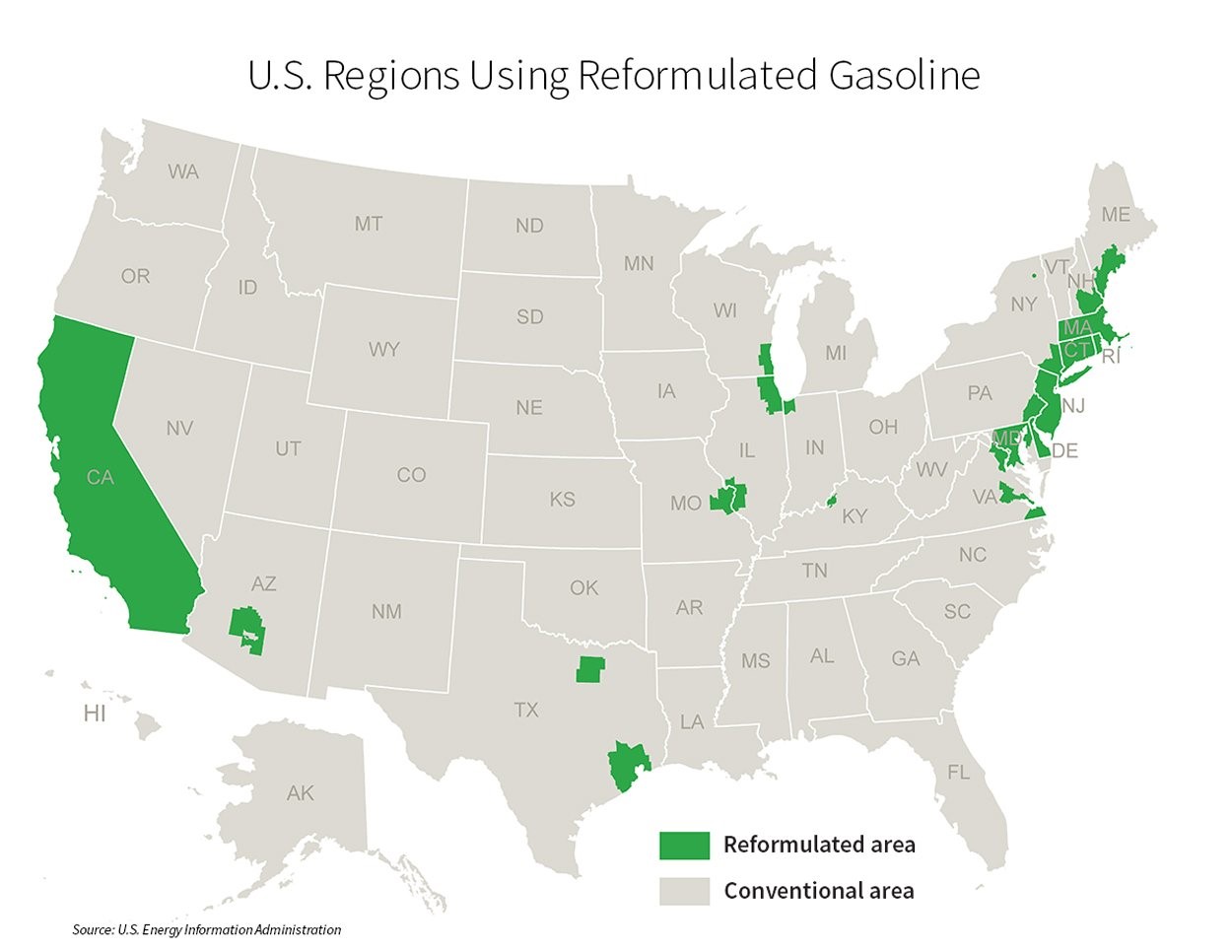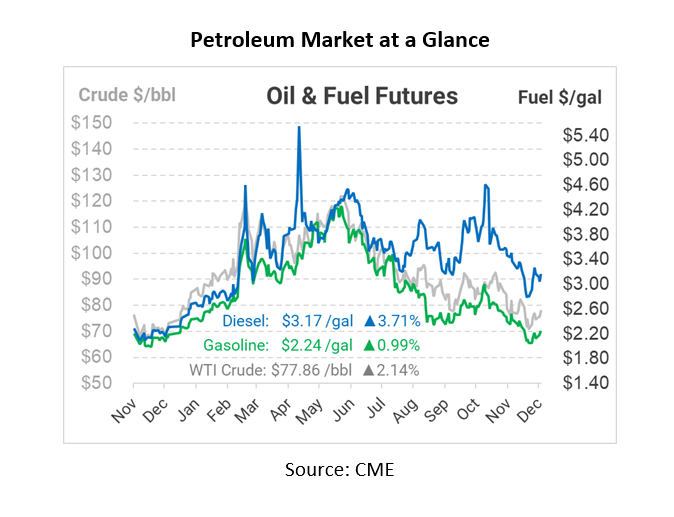
What Is It – Gasoline
Analysis by Sydney Casey
How much do you know about the fuel you put in your car? Consumers buy roughly 350 million gallons of gasoline every day, yet few know what it takes to get that gasoline into their car, van, boat, motorcycle, or truck. Gasoline is actually a blend of products, including a base petroleum product for blending as well as ethanol. Today, we’ll explore what goes into a gallon of gasoline, and what impacts its supply and pricing.
What is Gasoline?
Gasoline is a flammable mixture of hydrocarbons derived from petroleum and renewable fuels. Other words for gasoline used around the world include petrol, gasohol, benzine and naphtha. Unlike diesel, which technically refers to any fuel that can be used in a diesel engine, gasoline is defined by its specification. The majority of the gallon of gasoline is made up of a petroleum-based blend stock, such as CBOB or RBOB. The remainder is ethanol, a renewable fuel. In most countries, gasoline must also include certain additives such as stabilizers and detergents.
The acronym RBOB stands for Reformulated Blendstock for Oxygenate Blending (RBOB), which is a key component in creating reformulated gasoline. Simply put, reformulated means that the gasoline does not contain any Methyl tert-butyl ether (MTBE). The US began using RBOB largely because legislation outlawed the use of gasoline containing the chemical MTBE, which previously appeared in unleaded gasoline and was found to be contaminating the environment. To produce reformulated gasoline, a blend of RBOB is mixed with ethanol for an environmentally safe final product.
When traders invest in gasoline, they’re trading RBOB on the Chicago Mercantile Exchange (CME) with the futures ticker RB. It is traded in US dollars, with one contract containing 42,000 gallons. RBOB futures allows investors to hedge the gasoline market.
What is the difference between CBOB and RBOB?
RBOB is only used in a small minority of the US. Most regions of the US use CBOB, or Conventional Blendstock of Oxygenate Blending. But because the futures market is based in NY Harbor, an area which requires reformulated gasoline, RBOB gets the most attention.
Environmental impact is the biggest difference between the two options. RBOB is known to burn more eco-friendly emissions compared to CBOB. It is also proven to reduce smog and pollutants in the ground-level ozone layer. Cities with higher smog levels will require RBOB, which typically ends up being in the more metropolitan areas.
Twelve US states are required by law to implement reformulated gasoline or RBOB in their required areas. California, Connecticut, and New Jersey are among the most popular. States that are required to use RBOB in their fuel supply areas may be more likely to experience a price spike than other regions. OPIS has a useful map for seeing RFG and Conventional areas.
What is Octane?
The Octane Rating measures how resistant gasoline is to unexpected combustion and engine knock. “Octane” is a specific hydrocarbon molecule known for reducing engine knock. In older engines, gasoline could combust too early or late, causing the pistons in the engine to fall out of sync and causing a loud “knock” in the engine.
Contrary to popular thought, higher octane does not give the engine more power. However, certain high-power engines do require higher octane for more predictable combustion. Certain retail brands also add additional additives to their high octane “Premium” gasoline, which can add performance benefits unrelated to the octane itself.
What Impacts Gasoline Prices?
Since gasoline is a by-product of crude oil, RBOB traders keep close tabs on the price of WTI or Brent crude due to their tight price correlation. Further, crude oil supply and demand will also correlate to RBOB, although the gasoline market does have its own economic tugs.
Some factors contributing to RBOB’s unique market are the fact that most gasoline refining takes place in the Gulf Coast and that some regions of the US tax gasoline heavier than others. For example, California taxes gasoline at 68 cents per gallon, while Alaska charges 14 cents in tax. Factors such as inventory levels, geopolitical issues, refinery shutdowns, and weather can also affect pricing.
Typically, there are a few days of lag between RBOB price changes and what consumers see at gas stations. This is because the price of RBOB can be affected by several factors that take time to materialize. Back in May, we saw history made with RBOB futures trading above $4/gal. Futures for RBOB are currently trading around $2/gal, and projections for the first few months of the new year look similar.
How Much Is US Gasoline Demand?
The US consumed 8.7 million barrels of gasoline per day in 2021, equivalent to nearly 370 million gallons per day. Demand for gasoline is not consistent throughout the year, though. During the summer, demand rises as US consumers go on vacations and get outdoors. It also tends to spike around the holidays later in the year, such as Thanksgiving and Christmas. Otherwise, demand in the winter tends to be roughly 40 million gallons per day lower in the winter compared to the summer.
This article is part of Daily Market News & Insights
Tagged: gas, gas prices, gasoline, gasoline demand, Octane, rbob
MARKET CONDITION REPORT - DISCLAIMER
The information contained herein is derived from sources believed to be reliable; however, this information is not guaranteed as to its accuracy or completeness. Furthermore, no responsibility is assumed for use of this material and no express or implied warranties or guarantees are made. This material and any view or comment expressed herein are provided for informational purposes only and should not be construed in any way as an inducement or recommendation to buy or sell products, commodity futures or options contracts.







